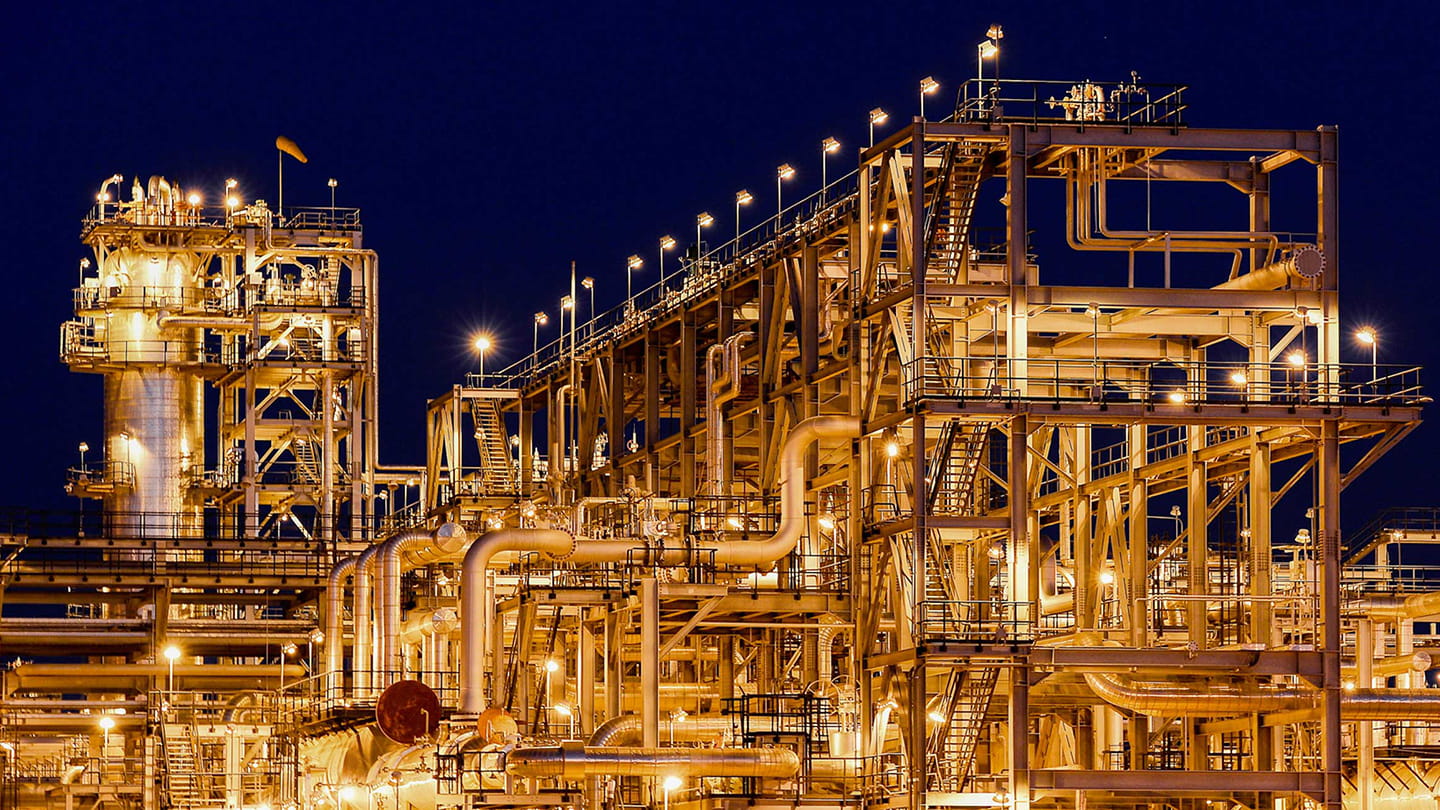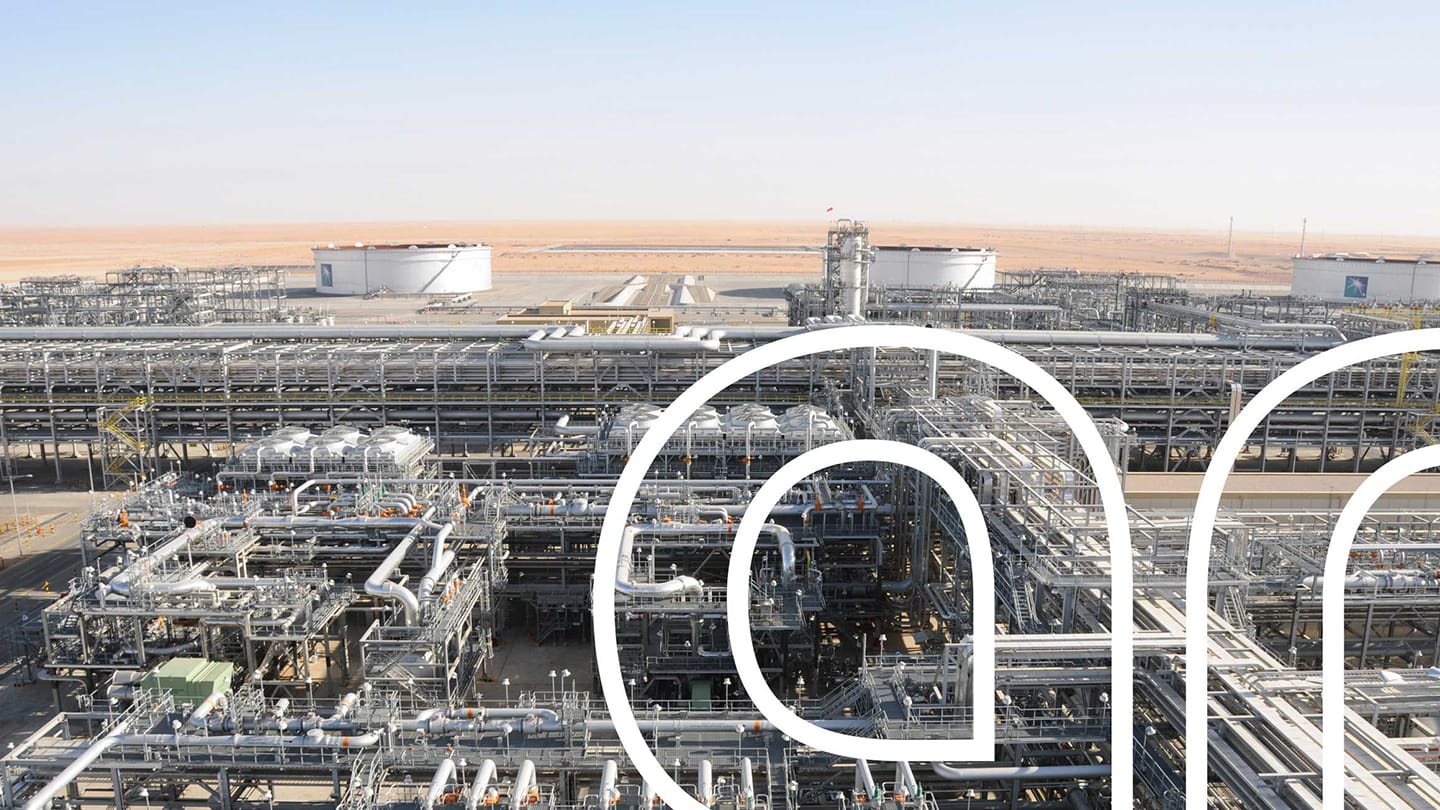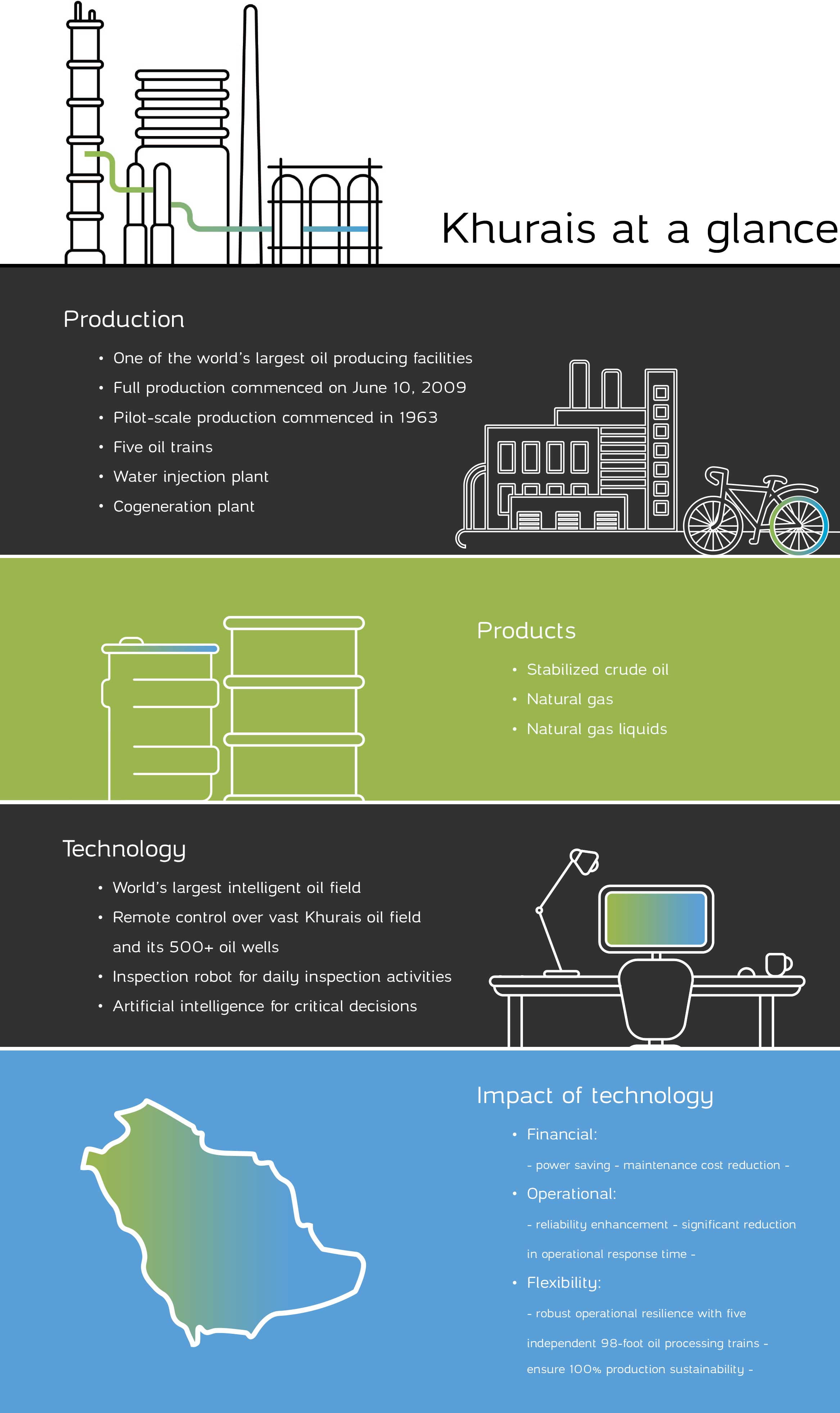From bytes to barrels
Digital solutions lightening the energy industry.

-
Khurais oil facility is one of the world’s largest intelligent oil fields
-
The field infrastructure setup has a digital twin
-
It is the second Aramco plant named as a World Economic Forum Lighthouse facility
Fourth Industrial Revolution (4IR) technology lightens the manufacturing footprint. A lighter footprint has the potential to make the world more sustainable and assist with achieving the 17 Sustainable Development Goals set out by the United Nations.
Southeast of Riyadh in Saudi Arabia, concealed deep beneath golden southern desert sands, lies three oil fields — Khurais, Abu Jifan, and Mazalij. Producing from the fields is one of the world’s largest oil producing facilities; Khurais.
Ten years ago, Aramco invested wisely to deploy the world’s largest intelligent oil field at Khurais. The facility utilizes automated industrial equipment and hardware, artificial intelligence, machine learning, and big data analytics.
Digital twin
In additional to the real-life production site at Khurais, there is a parallel real-time technology twin. The twin’s digital heart beats in a central control room in Khurais’ central processing facility.
Inside the nerve center, bytes of data speed across screens, keeping an electronic eye on end-to-end operations to monitor, predict, and diagnose. With just the touch of a button, advanced algorithms can be released to stop, start, reduce, or increase the intelligent field’s operations.

Khurais was unveiled as a Lighthouse facility for its successful implementation of Fourth Industrial Revolution (4IR) technologies, joining a group of world-leading companies that have succeeded in the adaptation of advanced manufacturing at scale.
The World Economic Forum (WEF) recently recognized the intelligent field infrastructure setup of Khurais, including it in their Global Lighthouse Network for its leadership in the adoption and integration of cutting-edge 4IR technologies.
“As part of Aramco’s dedication to increase the resiliency of its operations, the Khurais oil field was built as a fully connected and intelligent field,” the WEF said in a statement. “This enabled autonomous process control, remote operation and monitoring of equipment and pipelines, resulting in maximizing the oil well production with at least 15% attributed to smart well completion technology alone.”
Using bytes to produce lighter barrels
Aramco is on a journey to become the world’s leading digitalized energy company, leveraging technology to connect to a greener, more efficient, and safer way of operating. Digital transformation is the building block of the plants of the future.
“The goal is to foster efficiency, reliability, cost optimization, and reduce greenhouse gas emissions.”
Mohammed I. Al-Sowayigh, Khurais Producing Department manager
Khurais Producing Department manager Mohammed I. Al-Sowayigh said Khurais has embraced 4IR solutions across its operation; from the oil field’s subsurface to the oil facilities. “The goal is to foster efficiency, reliability, and cost optimization, and to reduce greenhouse gas emissions,” said Al-Sowayigh.
Smart advanced thinking
Each well in the Khurais oil field is equipped with smart downhole sensors, inflow control valves, and electric submersible pumps. Through big data analytics and machine learning, producing oil and gas from the wells is less energy intensive, possible failures are better identified, and reservoir management is enhanced.
Using machine learning predictive and prescriptive analytics, Khurais developed its own system to optimize fuel gas in boilers. The application contributed to significant annual fuel gas savings and an 8% reduction in CO2 emissions.
Oilfield fluids change dramatically when they are tapped into. Being able to smartly adjust the intricate flow of hydrocarbons through a well carries huge energy efficiency savings, as well as product quality benefits.
Technology adds to job safety in Khurais. Rather than standing on scaffolding to carry out inspections on tall infrastructure, people use robotics and drones to take a close look at what needs maintaining.
Every hour of every day, the sensors of a pipeline management system tirelessly check for leaks, detecting failures at precise locations in real time. Long-range and thermal cameras provide a field view to confirm decisions.

Lighthouse program
The WEF commenced its “Manufacturing Lighthouse Program” in 2018 to help industries overcome the practical challenges of adopting future technologies. To date, a total of 54 facilities around the world have been recognized as 4IR Lighthouses, with the goal to help other manufacturers deploy technology, adopt sustainable solutions, and transform their workforces.
In January 2019, Aramco’s ‘Uthmaniyah Gas Plant became the first oil and gas plant in the world to be designated a Lighthouse by the WEF. ‘Uthmaniyah, part of a group of 16 manufacturing sites selected from an initial list of 1,000 manufacturers, was recognized as a leader in using advanced analytics and artificial intelligence to slash inspection time, optimize costs, and increase safety.
More from Elements
The material in this article is intended to be for general informational purposes only, and readers should not place undue reliance on the statements or opinions therein. Any information provided speaks only as of the date this content was published and Saudi Aramco undertakes no obligation to correct, update, or revise any statements or opinions made in or implied by this article.



